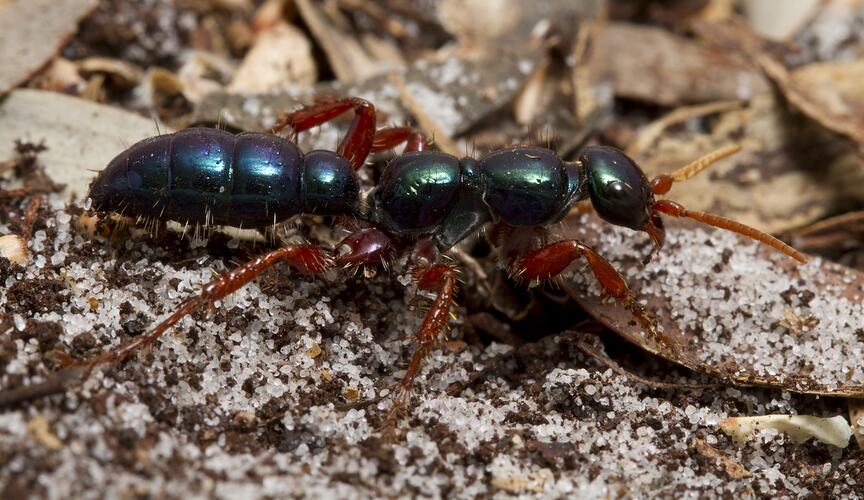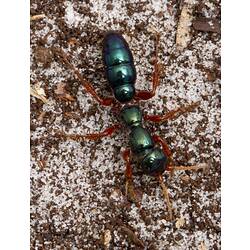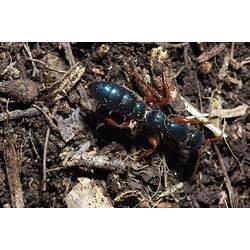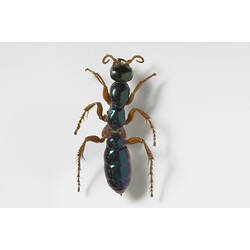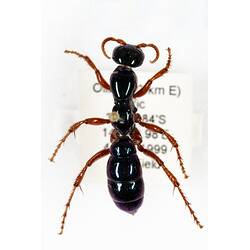General Description
Female: no wings, spiny legs, shiny and blue with orange-red antennae and legs. Male: wings, black with white spots. Body up to 3 cm long.
Biology
Despite their name and the ant-like appearance of the females, Blue Ants are actually wasps. Female Blue Ants live on the ground, running around with jerky movements and a raised abdomen, searching for young mole crickets in soil to paralyse and lay an egg on. The larva hatches from the egg and feeds on the live cricket. Females have a painful sting. Males visit flowers to feed on nectar.
Distribution
South-eastern mainland Australia and Tasmania.
Habitat
Grasslands, pastures and urban areas.
More Information
-
Animal Type
-
Animal SubType
-
Brief Id
Black body with white spots, or blue body with red legs.
-
Colours
Black, Blue
-
Habitats
-
Diet
Nectar
-
Hazards
Females have a painful sting; sting sometimes causes allergic reaction.
-
Endemicity
-
Commercial
No
-
Conservation Statuses
CITES: Not listed, FFG Threatened List: Not listed, DSE Advisory List: Not listed, IUCN Red List: Not listed
-
Taxon Name
-
Scientific Author
Westwood, 1835
-
Common Name
Blue Ant
-
Other Names
Bluebottle ant
-
Kingdom
-
Phylum
-
Subphylum
-
Class
-
Order
-
Superfamily
-
Family
-
Subfamily
-
Genus
-
Species Name
bicolor
